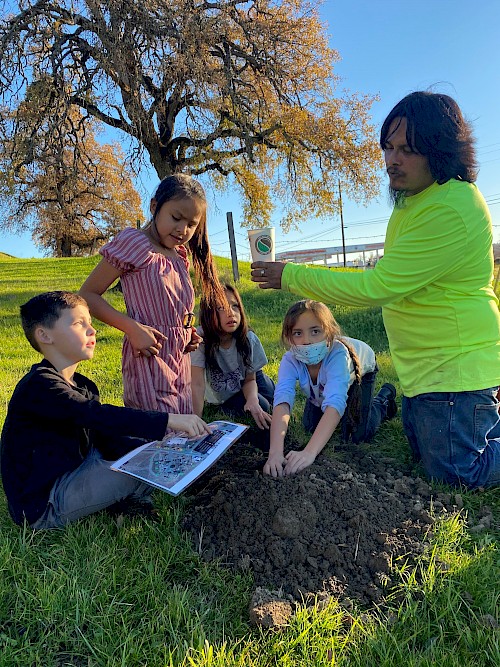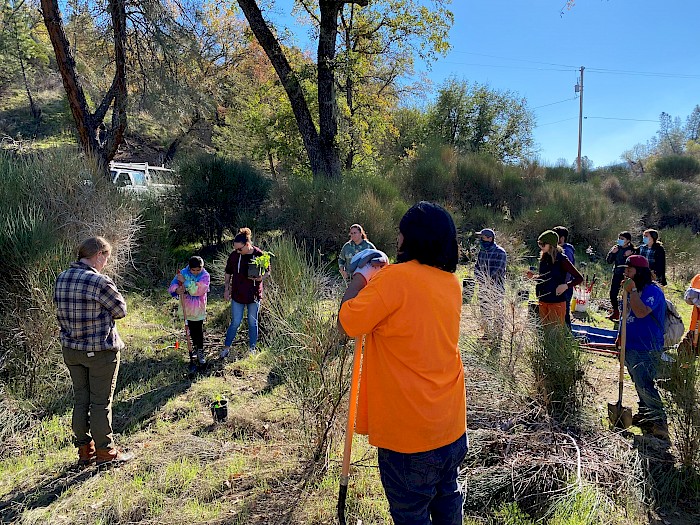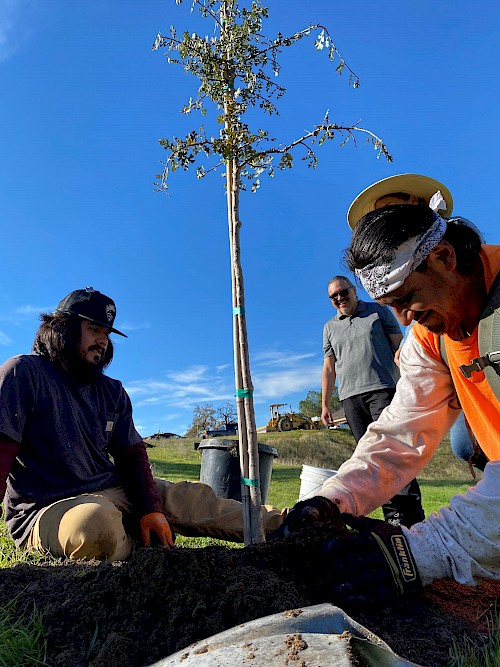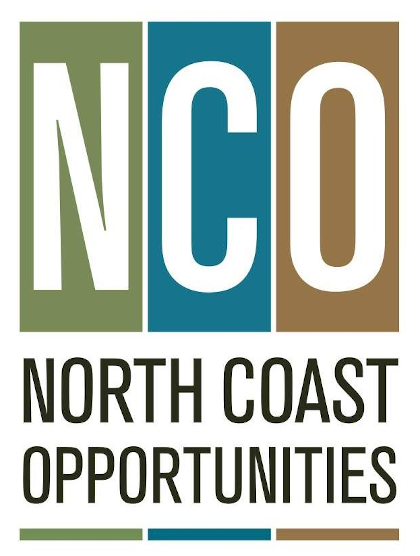The Greening Lake County project aims to restore the land and beauty of Lake County after years of devastating fires.
This spring and throughout seasons to come, 504 fruiting, flowering, and shade-giving trees and nearly 100 specimens of native plants will be sprouting up in neighborhoods and communal spaces across Lake County. The new flora is the result of Greening Lake County, a collaborative project between North Coast Opportunities (NCO), Tribal EcoRestoration Alliance (TERA), the City of Lakeport, and partner sites to revitalize and beautify communities in a region that has endured harrowing damage from recent wildfires.
According to the report Cumulative Impact of Lake County’s Disasters published by the County of Lake, fires have consumed more than two-thirds of Lake County’s land mass since 2015, claiming thousands of homes and structures, upending lives, and damaging much of the region’s natural landscape, including trees and forests that act as powerful carbon-capturing tools to combat climate change and contribute to the overall livability of communities.
“NCO has dispersed millions of dollars in fire assistance to support survivors’ needs for housing, food, and essentials in Lake County over the last 7 years,” said NCO Executive Director Patty Bruder. “So we were excited for the opportunity to support fire recovery efforts in a new way--through land regeneration and re-beautification--to help restore communities that have been impacted by years disasters.”
The Greening Lake County project was funded by CalFire and the United States Forest Service through the California ReLeaf grant that supports community collaborations contributing to the livability of cities and the protection of the environment by planting and caring for trees. NCO could not complete this massive project alone and sought out partners to survey Lake County communities and lead the planting activities while providing a matching grant, backbone coordination, and administration support for the project.
Through a collaborative effort, Greening Lake County partners identified 11 sites in Clearlake, Lakeport, Middletown, and Nice and began planting in mid-2021. The City of Lakeport signed on to plant and care for 53 trees in the public areas of Library Park, Main Street downtown, Eleventh Street, and Westside Community Park. These trees will flower in the spring, beautifying the downtown corridor, and provide benefits to the city’s residents and visitors.
“Not only do trees help deflect sunlight reducing the heat island effect caused by pavement and commercial buildings, but they also create an aesthetically pleasing environment,” said Ron Ladd, Public Works Superintendent for the City of Lakeport. “Working with NCO on the ReLeaf project has been pleasure.”
NCO subcontracted with the land restoration nonprofit Tribal EcoRestoration Alliance (TERA) to design and plant the additional 451 trees and 90 native plants at six partner sites across Lake County including Highland Senior Center in Clearlake, Hospice Services of Lake County in Lakeport, Jesus Christ Fellowship and Middletown Rancheria of Pomo Indians in Middletown, and Robinson Rancheria of Pomo Indians in Nice. Specifically, TERA’s role was to select the species best suited for the local ecosystems, and to ensure the project promotes fire resilience, provides maximum benefits to the community and to the land.
[This archive item was originally published on Monday, April 18, 2022]
TERA is a cross-cultural, multi-organizational collaborative revitalizing ecology, economy, and culture through indigenous-led restoration seeking to un-do centuries of poor land stewardship policies. TERA had previously partnered with NCO’s fiscally sponsored program The Oak Granary and NCO was confident that they had the expertise and partnerships to carry out the planting activities in a way that was best for the land, culturally relevant, and engaging for the community.
Bringing together indigenous wisdom and practices of caring for the earth, TERA hires their crews from tribal communities to cultivate land stewardship, livelihood, and leadership skills that build bridges between tribal residents and the larger community.
“Lake is one of the most under-resourced counties in California,” said Alyson Sagala, TERA Operations Manager. “It’s important our staff also comes from the community it serves. It’s not someone from outside coming in to do this project. People who live here are being paid to help their neighbors and that’s what’s beautiful about the project.”
All trees and native plants under the Greening Lake County project have an intention and a purpose in the local ecosystem and community and provide holistic benefits. Apple, walnut, peach, cherry, and mulberry trees will provide food access for residents of a tiny home village at Jesus Christ Fellowship, built in part by participants of Building Homes, Building Lives, an NCO program that provides paid training and job placement in general construction for unemployed or housing insecure residents.
TERA also plants Valley Oaks and Blue Oaks that when mature can reach up to 100 feet tall with a canopy of 40 feet in diameter, providing essential shade in the summer months and helping combat climate change. Wildfires, especially on the scale Lake County has experienced, emit massive amounts of greenhouse gases further worsening carbon emissions. Due to their size and long lifespan, oaks can capture substantial amounts of carbon from the air, offsetting greenhouse gases for more than a century.

Above: TERA Crew Member Mark McCloud planting native Toyon and Redbud trees with his daughter
Mina McCloud (tribal member Big Valley Rancheria), Alana Varela, Emmalina Varela,
and Natalya Eagle (tribal members at Robinson Rancheria)
“[This work] is important for my kids, for everyone’s kids, and all the children that will come after us,” said Mark McCloud, TERA Crew Member and Tribal Member at Big Valley Rancheria Band of Pomo Indians.
When intentionally intermingled with the built environment, oaks can also help communities reduce their consumption of fossil fuels. TERA placed plantings at Robinson Rancheria, Jesus Christ Fellowship, Middletown Hospice Thrift and Highland Senior Center within 60 feet from the buildings so their expansive canopies will create a cooling effect, reducing the energy required to keep the buildings comfortable in warmer months.
“I think people don’t realize how much they take away from the Earth,” said Lance McCloud, TERA Crew member and Tribal Member at Robinson Rancheria of Pomo Indians of California. “Us giving back, it may be small, but will still make a big impact for everything in the long run.”
Oaks are vital to supporting biodiversity in the region, providing habitat and resources for a vast web of life, from the moth larva to the black bear, and are also culturally important to tribes in Northern California who utilize the acorns for food and many other parts of the tree for basketry, tools, and medicines.
TERA planted the oaks by collecting native acorns onsite, a practice that produces a resilient tree suited for the land. In addition, TERA placed 90 specimens of native species and other culturally significant plants—such as elderberry, a native shrub with many medicinal uses and redbud, a material used for basket making--on the Pomo lands of Middletown and Robinson Rancherias.
According to NCO Project Coordinator Sarah Marshall, the Greening Lake County project was the first time California ReLeaf funded planting activities on tribal land. NCO and TERA made special efforts to advocate to California ReLeaf to use the funds in this way.
“It’s been great to work with California ReLeaf and to see how flexible they have been to allow us to work with the tribes and use their methods for regeneration,” said Marshall. “It is setting a precedent for all other organizations working with California ReLeaf. Now they may consider working with tribes in this way in the future.”
TERA hosts volunteer days at the project sites to engage the community around the Greening Lake County work. They provide training on plant care, presentations on native and drought-resistant species, and information to encourage volunteers to plant trees in their own yards. Each training is tailored to fit the community and provides opportunities for volunteers to learn about the cultural, historical, and ecological context of each species.
“Most places you need higher degrees or other resources to do this kind of work, but TERA is sharing this knowledge and passing that information along to anyone who wants to learn and is creating opportunities for people to do this work who haven’t always had the ability to,” said Stoney Timmons, TERA Crew Lead and Tribal Member at Robinson Rancheria of Pomo Indians of California.
The volunteer days garner an overwhelmingly positive response from the communities near the planting sites as those who live nearby show up to help and learn. According to TERA Operations Manager Alyson Sagala, the response from the Robinson and Middletown Rancheria communities have been particularly inspiring, as they have participated on planting days and offered funds to support the project.
“The ability to extend this partnership and work with local tribes in our community is incredible,” said Sagala. “We are privileged to be able to partner with an organization like NCO.”

TERA Crew and Middletown Rancheria community members participating a community planting day in November 2021. They planted elderberry, redbud and pepperwood trees along a creek bed and the TERA crew taught about riparian native plant ecology.
 Lance McCloud (TERA Crew Member) , Martin Duncan (TERA Crew Member) and Beniakem Cromwell (Robinson Rancheria Tribal Council Chairman) planting a Valley Oak tree at Robinson Rancheria by their tribal offices.
Lance McCloud (TERA Crew Member) , Martin Duncan (TERA Crew Member) and Beniakem Cromwell (Robinson Rancheria Tribal Council Chairman) planting a Valley Oak tree at Robinson Rancheria by their tribal offices.
Special thanks to Tribal EcoRestoration Alliance for their contributions to this article. To learn more about TERA, visit tribalecorestoration.org.
[This archive item was originally published on Monday, April 18, 2022]
